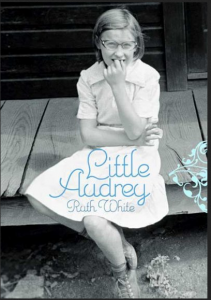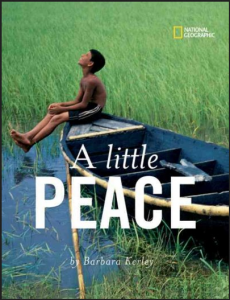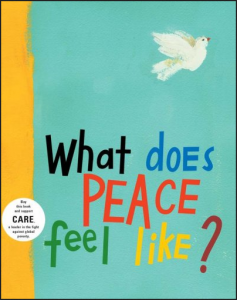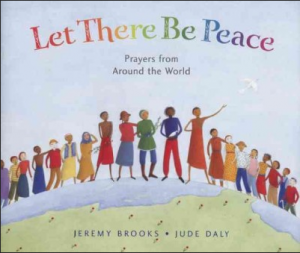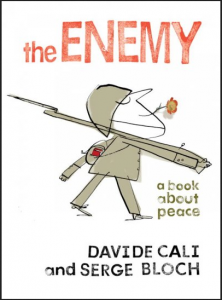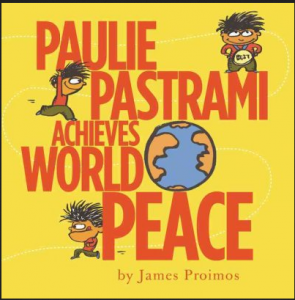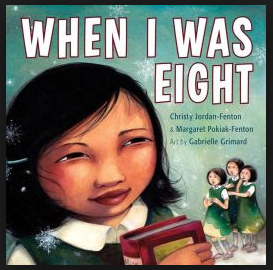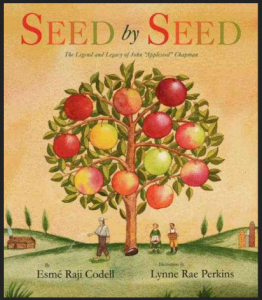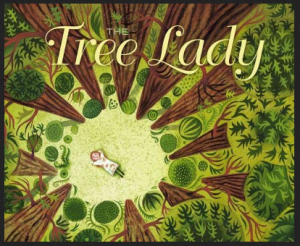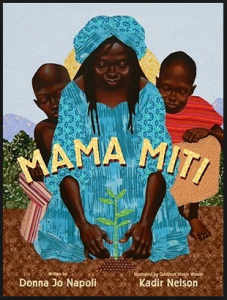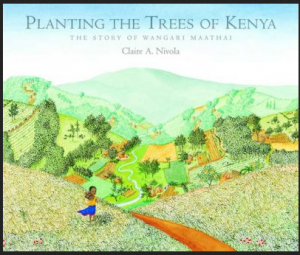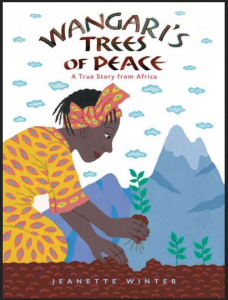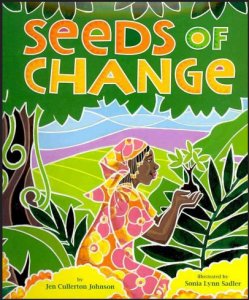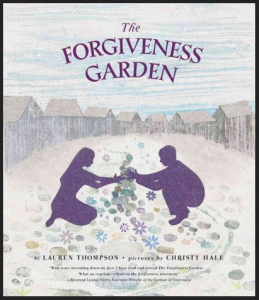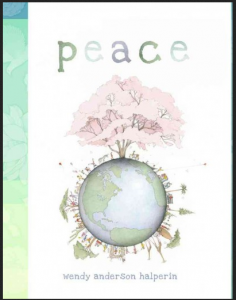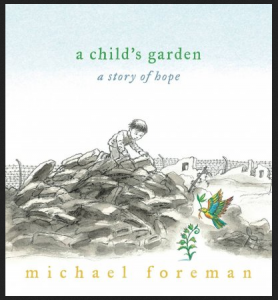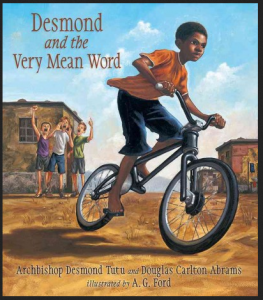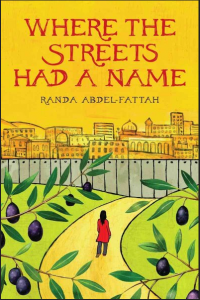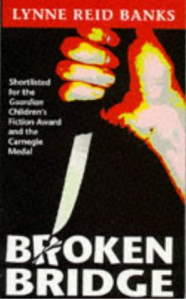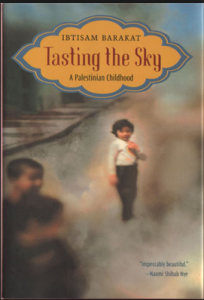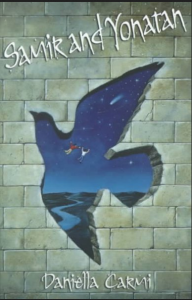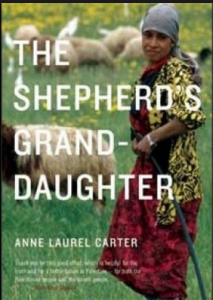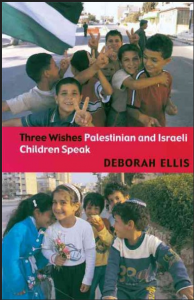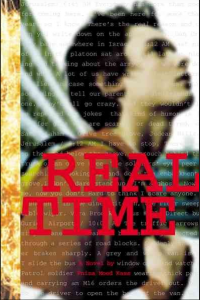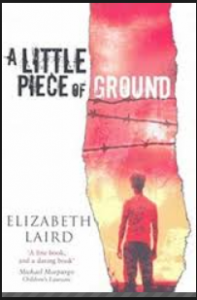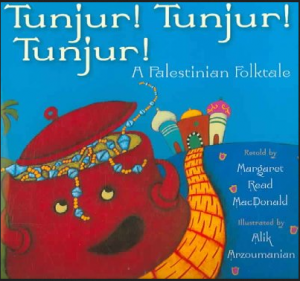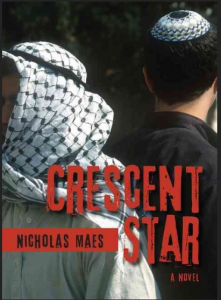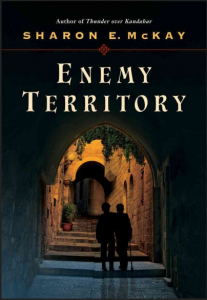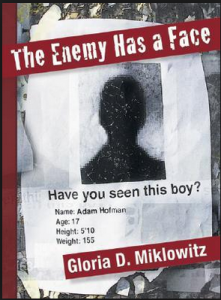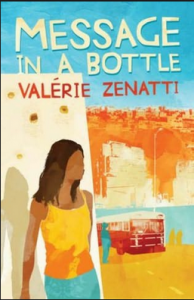Barakat, Ibtisam. Tasting the Sky: A Palestinian Childhood. New York: Farrar, Straus and Giroux, 2007.
“In this memoir set in Ramallah during the aftermath of the 1967 Six-Day War, Ibtisam Barakat captures what it is like to be a child whose world is shattered by war.” – CIP
…
Carmi, Daniella. Samir and Yonatan. New York: Arthur A. Levine Books, c2000.
“Samir, a Palestinian boy, is sent for surgery to an Israeli hospital where he has two otherworldly experiences, making friends with an Israeli boy, Yonatan, and traveling with him to Mars where Samir finds peace over his younger brother’s death in the war.” – CIP.
…
“Peace cannot be kept by force; it can only be achieved by understanding.” – Albert Einstein
…
Carter, Ann Laurel. The Shepherd’s Granddaughter. Toronto: Groundwood Books / House of Anansi Press, 2008.
“Amani longs to be a shepherd like her grandfather, Seedo. Like many Palestinians, her family has grazed sheep above the olive groves of the family homestead for generations, and she has been steeped in Seedo’s stories, especially one about a secret meadow called the Firdoos–and the wolf that once showed him the path there.” – CIP.
…
Clinton, Cathryn. A Stone in My Hand. Cambridge, Mass.: Candlewick Press, 2004, c2002.
“Eleven-year-old Malaak and her family are touched by the violence in Gaza between Jews and Palestinians when first her father disappears and then her older brother is drawn to a radical group.” – CIP.
…
“Our object must be to bring our territory into harmony with the numbers of our population.” – Adolf Hitler
…
Ellis, Deborah. Three Wishes: Palestinian and Israeli Children Speak. Toronto: Groundwood Books, 2004.
“Young people between the ages of eleven and eighteen share what it is like to live in the midst of the upheaval and violence of the Israeli – Palestinian conflict.” – CIP.
…
“An eye for an eye only ends up making the whole world blind.” – Mahatma Gandhi
…
Kass, Pnina Moed. Real Time. New York: Clarion Books, 2004.
“Sixteen-year-old Tomas Wanninger persuades his mother to let him leave Germany to volunteer at a kibbutz in Israel, where he experiences a violent political attack and finds answers about his own past.” – CIP
…
Laird, Elizabeth. A Little Piece of Ground. London, UK : Macmillan Children’s Books, 2004.
“During the Israeli occupation of Ramallah in the West Bank of Palestine, twelve-year-old Karim and his friends create a secret place for themselves where they can momentarily forget the horrors of war.” – CIP
…
Macdonald, Margaret Read. Tunjur! Tunjur! Tunjur!: A Palestinian Folktale. New York: Marshall Cavendish, 2006.
“A childless woman’s prayers are answered by the arrival of a talking pot, but the new mother knows that Little Pot must learn right from wrong just like any child.” – CIP [Folklore; Humorous stories; Palestinian Arabs; Theft]
…
“I am never proud to participate in violence, yet I know that each of us must care enough about ourselves that we can be ready and able to come to our own defense when and wherever needed.” – Maya Angelou, American poet
…
Maes, Nicholas. Crescent Star: a Novel. Toronto: Dundurn Press, 2011.
Avi is Jewish and Moussa is Palestinian. Both boys are fifteen years old and live in Jerusalem. They belong to the same soccer club but do not know each other. As they struggle to find their own paths in life, readers gain a better understanding of the complexity of the Palestinian-Israeli conflict. Recommended for young adults.
…
McKay, Sharon E. Enemy Territory. Toronto: Annick Press, 2012.
“Sam, an Israeli teen whose leg may have to be amputated, and Yusuf, a Palestinian teen who has lost his left eye, find themselves uneasy roommates in a Jerusalem hospital.” – back cover. While not the most memorable novel on this theme nor the best written, this story is nevertheless recommended for readers 11 to 16 years old who want to learn more about the Arab-Israeli conflict.
…
…
Miklowitz, Gloria D. The Enemy Has a Face. Grand Rapids, MI: Eerdmans Books for Young Readers, 2003.
“Netta and her family have relocated temporarily from Israel to Los Angeles, and when her seventeen-year-old brother mysteriously disappears, she becomes convinced that he has been abducted by Palestinian terrorists.” – CIP.
…
Zenatti, Valerie. Message in a Bottle. New York: Bloomsbury, 2005, translation c2008.
“Seventeen-year-old Tal of Jerusalem, dejected over the ongoing Arab-Israeli conflict, puts her hopes for peace in a bottle and asks her brother, a military nurse in the Gaza Strip, to toss it into the sea.” – CIP.
…
More stories of current and recent conflicts: HERE
…
“Darkness cannot drive out darkness: only light can do that. Hate cannot drive out hate: only love can do that.” – Martin Luther King Jr.
